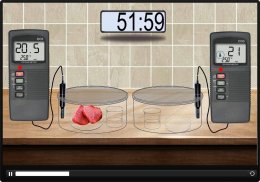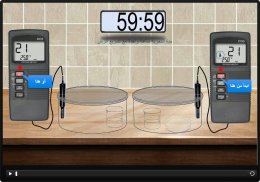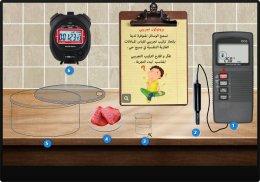








Respiration cellule

Respiration cellule介绍
Essentially, sugar (C6H12O6) is burned, or oxidized, down to CO2 and H2O, releasing energy (ATP) in the process. Why do cells need ATP? ALL cellular work -all the activities of life - requires energy, either from ATP or from related molecules. A lot of oxygen is required for this process! The sugar AND the oxygen are delivered to your cells via your bloodstream.
This process occurs partially in the cytoplasm, and partially in the mitochondria. The mitochondria is another organelle in eukaryotic cells. like the chloroplast, the mitochondria has two lipid bilayers around it, and its own genome (indicating that it may be the result of endosymbiosis long ago). In some ways similar to the chloroplast, the mitochondria also has two main sites for the reactions: The matrix, a liquidy part of the mitochondrion, and the christae, the folded membranes in the mitochondrion.
1: Glycolysis ("splitting of sugar"): This step happens in the cytoplasm.
One Glucose (C6H12O6) is broken down to 2 molecules of pyruvic acid. Results in the production of 2 ATPs for every glucose. (page 113 of your book goes into painful detail about this process, but all YOU need to know is that glucose is split into to 2 molecules of pyruvate!)
2: Transition Reaction: Pyruvic Acid is shuttled into the mitochondria, where it is converyed to a molecule called Acetyl CoA for further breakdown.
3: The Krebs Cycle, or Citric Acid Cycle: Occurs in the mitochondrial matrix, the liquid-y part of the mitochondria.
In the presence of Oxygen gas (O2), all the hydrogens (H2) are stripped off the Acetyl CoA, two by two, to extract the electrons for making ATP, until there are no hydrogens left - and all that is left of the sugar is CO2 - a waste product - and H2O (exhale). The Krebs cycle results in the production of only ~4 ATPs, but produces a lot of NADH, which will go on to the next step... Hans Krebs won the Nobel Prize in 1953 for his discovery of the Citric Acid Cycle.
4: The Electron Transport Chain and Chemiosmosis ("the big ATP payoff"). Occurs in the christae of the mirochondria, the folded membranes inside the chloroplast.
Electrons from Hydrogen are carried by NADH and passed down an electron transport chain to result in the production of ATP. Results in the production of ~32 ATPs for every glucose. Peter Mitchell won the Nobel Prize in 1978 for his work on energy production in mitochondria
Essentially, sugar (C6H12O6) is burned, or oxidized, down to CO2 and H2O, releasing energy (ATP) in the process. Why do cells need ATP? ALL cellular work -all the activities of life - requires energy, either from ATP or from related molecules. A lot of oxygen is required for this process! The sugar AND the oxygen are delivered to your cells via your bloodstream.
This process occurs partially in the cytoplasm, and partially in the mitochondria. The mitochondria is another organelle in eukaryotic cells. like the chloroplast, the mitochondria has two lipid bilayers around it, and its own genome (indicating that it may be the result of endosymbiosis long ago). In some ways similar to the chloroplast, the mitochondria also has two main sites for the reactions: The matrix, a liquidy part of the mitochondrion, and the christae, the folded membranes in the mitochondrion.
1: Glycolysis ("splitting of sugar"): This step occurs in the cytoplasm.
One Glucose (C6H12O6) is broken down to 2 molecules of pyruvic acid. Results in the production of 2 ATPs for every glucose. (page 113 of your book goes into painful detail about this process, but all YOU need to know is that glucose is split into to 2 molecules of pyruvate!)
2: Transition Reaction: Pyruvic Acid is shuttled into the mitochondria, where it is converyed to a molecule called Acetyl CoA for further breakdown.
3: The Krebs Cycle, or Citric Acid Cycle: Occurs in the mitochondrial matrix, the liquid-y part of the mitochondria.
In the presence of Oxygen gas (O2), all the hydrogens (H2) are stripped off the Acetyl CoA, two by two, to extract the electrons for making ATP, until there are no hydrogens left - and all that is left of the sugar is CO2 - a waste product - and H2O (exhale). The Krebs cycle results in the production of only ~ 4 ATPs, but produces a lot of NADH, which will go on to the next step ... Hans Krebs won the Nobel Prize in 1953 for his discovery of the Citric Acid Cycle.
4: The Electron Transport Chain and Chemiosmosis ("the big ATP payoff"). Occurs in the christae of the mirochondria, the folded membranes inside the chloroplast.
Electrons from Hydrogen are carried by NADH and passed down an electron transport chain to result in the production of ATP. Results in the production of ~ 32 ATPs for every glucose. Peter Mitchell won the Nobel Prize in 1978 for his work on energy production in mitochondria


























